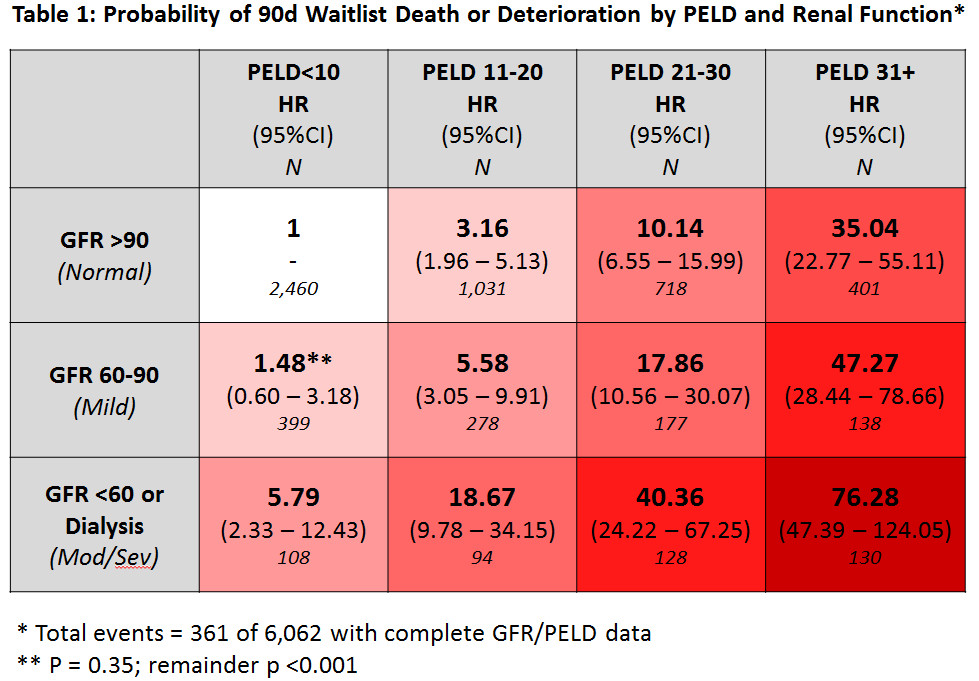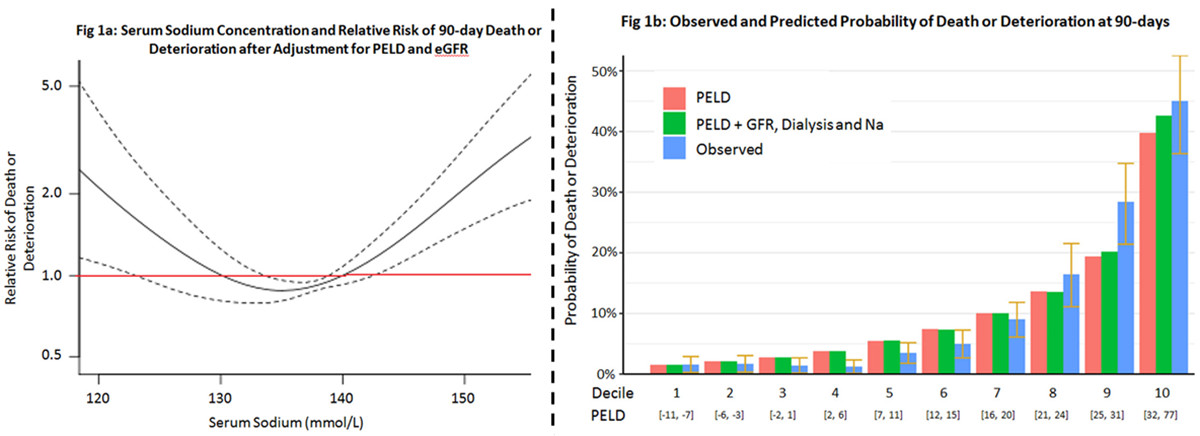Renal Function Parameters Improve PELDs Prediction of 90-day Death or Deterioration
1Anesthesiology, Mayo Clinic, Rochester, MN, 2Surgery, Mayo Clinic, Rochester, MN, 3Pediatric Gastroenterology, Mayo Clinic, Rochester, MN, 4Gastroenterology, Mayo Clinic, Rochester, MN
Meeting: 2020 American Transplant Congress
Abstract number: 584
Keywords: Liver transplantation, Pediatric, Prediction models, Risk factors
Session Information
Session Time: 3:15pm-4:45pm
 Presentation Time: 3:39pm-3:51pm
Presentation Time: 3:39pm-3:51pm
Location: Virtual
*Purpose: Reliance upon exception points to prioritize children for liver transplantation (LT) stems from concerns that the Pediatric End-Stage Liver Disease (PELD) score underestimates mortality. Renal dysfunction has been highlighted as a negative prognostic marker in various pediatric populations, but is not accounted for in PELD. We evaluated the impact of renal dysfunction in predicting 90-day waitlist death/deterioration.
*Methods: All pediatric patients (<12-years) listed for isolated LT in the United States between Feb 2002 and Jun 2018 were studied. The relationship between estimated glomerular filtration rate (eGFR), dialysis requirement, serum sodium and 90-day waitlist death/deterioration were analyzed using Cox proportional-hazards models.
*Results: Amongst 6,522 patients identified, 5,016 (76.9%) were transplanted, 317 (4.9%) died and 199 (3.1%) deteriorated beyond transplantability. eGFR (HR 1.12 per 10-unit decrease, 95%CI 1.10-1.16), and dialysis (HR 7.41, 95%CI 3.93-13.95) were univariate predictors of 90-day death/deterioration (p<0.001). Worsening renal function imparted progressively inferior outcomes across all PELD categories (Table 1). Adjusting for PELD and eGFR, sodium was a significant non-linear predictor of outcome, as risk of 90-day death/deterioration was significantly increased at both extremes of sodium concentration (Fig 1a). A multivariable model incorporating PELD, eGFR, dialysis and sodium demonstrated improved performance (C-index 0.87 vs 0.84, p<0.001) and superior calibration (Fig 1b) as compared to conventional PELD.
*Conclusions: Listing eGFR, dialysis and sodium are potent, independent predictors of 90-day death/deterioration in pediatric LT candidates. Incorporation of these variables into prognostic models highlights patient subsets with previously underappreciated risk, while augmenting the performance of PELD for outcome prediction. Consideration should be given to including eGFR, dialysis and sodium in LT waitlist prioritization in an effort to mitigate reliance upon exception points.
To cite this abstract in AMA style:
Thalji L, Thalji N, Haile D, Heimbach J, Ibrahim S, Kamath P, Kor D. Renal Function Parameters Improve PELDs Prediction of 90-day Death or Deterioration [abstract]. Am J Transplant. 2020; 20 (suppl 3). https://atcmeetingabstracts.com/abstract/renal-function-parameters-improve-pelds-prediction-of-90-day-death-or-deterioration/. Accessed December 19, 2025.« Back to 2020 American Transplant Congress


